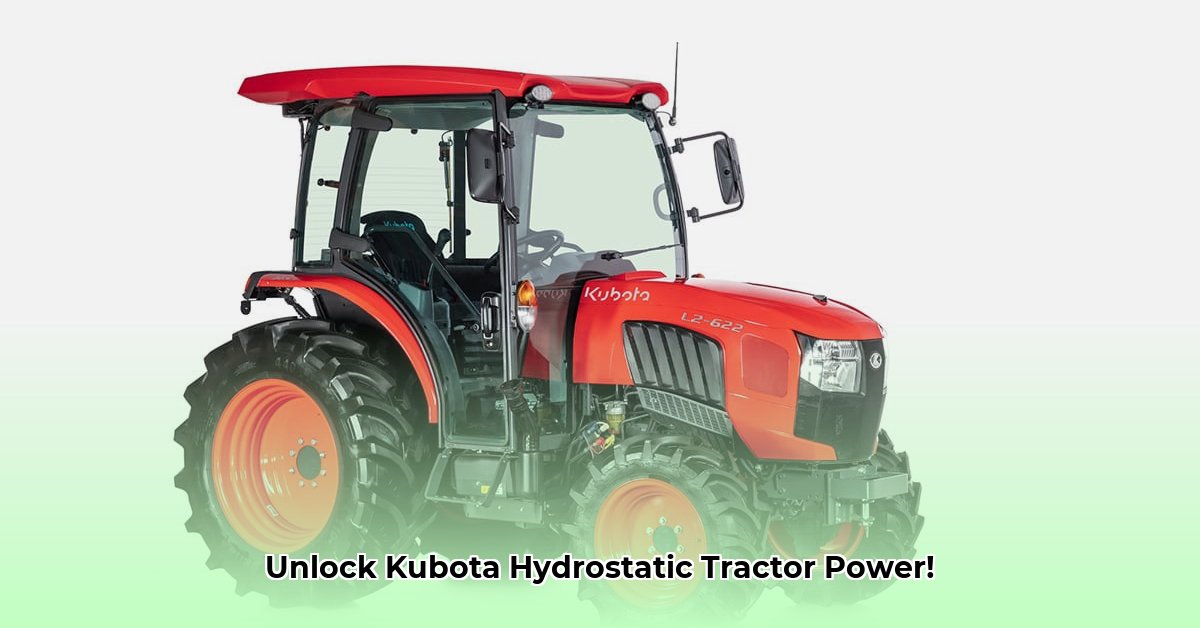
Choosing the right Kubota tractor significantly impacts farm efficiency and profitability. This guide simplifies choosing the best transmission type for your needs, covering hydrostatic (HST), Glide Shift, Shuttle Shift, and Direct Drive (DT) transmissions. We'll address common problems, compare performance, and offer expert maintenance tips. Whether you're a seasoned farmer or a novice, this guide ensures you get the most from your Kubota investment. For more in-depth information, check out this helpful guide: Kubota Tractor Operation.
Understanding Your Needs: The Foundation of Choice
Before considering transmission types, analyze your farming operation. What type of land do you work? Flat, gently rolling hills, or steep slopes? What tasks are involved? Mowing, tilling, hauling, or other activities? Your answers dictate the ideal transmission. For instance, heavy hauling demands high power, while frequent direction changes benefit from specific transmission designs. Experienced operators may favor different features than newer tractor users. What are your key priorities when selecting a tractor?
Decoding Kubota Tractor Transmissions
Kubota offers diverse transmissions, each with unique strengths and weaknesses:
Hydrostatic Transmission (HST): Similar to an automatic car transmission, HST uses a single lever or pedal to control speed and direction. This ease of use makes HST tractors ideal for beginners and smaller operations on flat land where precise speed control is essential. However, they generally offer lower horsepower than other types and may struggle on steep inclines or with heavy loads. Think of it as having a continuously variable transmission (CVT) that smoothly adjusts power for optimal results.
Shuttle Shift: Designed for frequent direction changes, the Shuttle Shift allows forward and reverse shifting without using the clutch. This is perfect for tasks requiring frequent changes in direction, such as hay baling or crop cultivation. Offering multiple gears, it provides a wider range of speeds and power than HST. It’s an excellent option when efficiency and versatility are paramount.
Glide Shift: A middle ground between HST and Shuttle Shift, Glide Shift provides clutchless shifting between multiple gears. Smooth, rapid acceleration is achieved without the complexity of a manual transmission. This is a good compromise, often suitable for medium-sized operations.
Direct Drive (DT): Similar to a traditional manual car transmission, DT utilizes a clutch pedal to change gears, offering precise control over speed and engine power. Extremely durable and powerful for heavy-duty work, it requires more skill and is less convenient for frequent direction changes. Ideal for the most demanding tasks.
Kubota Tractor Transmission Comparison
This table summarizes key differences:
| Feature | HST | Shuttle Shift | Glide Shift | Direct Drive (DT) |
|---|---|---|---|---|
| Ease of Use | Excellent | Good | Excellent | Fair |
| Power | Lower | High | Medium-High | Highest |
| Hill Climbing | Fair | Good | Good | Excellent |
| Typical Use | Flat land, beginners | Frequent direction changes | Medium-sized operations | Heavy-duty tasks |
Tractor Maintenance: Essential for Longevity
Regardless of the transmission type, regular maintenance extends tractor life and prevents costly repairs. This includes checking and changing transmission fluids and filters according to the owner's manual. Neglecting this can lead to premature wear, especially affecting hill-climbing ability in HST tractors. Maintaining schedules keeps your tractor running smoothly and minimizes downtime.
Choosing the Right Transmission: Prioritize Your Needs
The best transmission depends entirely on individual needs and preferences. Consider your workload, terrain, experience, and budget. Consult your local Kubota dealer for expert guidance tailored to your specific circumstances. They can help weigh the pros and cons of each option and guide you to the perfect tractor for your farming operation.
Improving Kubota HST Tractor Hill Climbing Performance
While excellent on flat land, HST tractors can struggle on slopes. Understanding limitations and employing proper techniques is crucial.
Troubleshooting Hill Climbing Issues
Before significant repairs, try these:
Fluid Check: Ensure hydraulic fluid is clean and at the correct level. Low or dirty fluid drastically reduces efficiency.
RPM Adjustment: Higher engine RPMs often maintain speed and prevent engine strain uphill.
Pedal Pressure: Gradual, consistent pedal pressure is more efficient than abrupt movements.
Mechanical Inspection: If problems persist, a professional mechanic should inspect HST components for worn seals, pumps, or other internal issues.
Long-Term Strategies for Improved Performance
If basic troubleshooting doesn't solve issues, consider:
- Professional Service: A Kubota dealer or qualified mechanic can diagnose and repair complex mechanical problems.
- Refined Operating Techniques: Practice smooth operation to enhance both performance and longevity.
HST vs. Other Transmissions in Hilly Terrain
While HST excels on flat land, gear-driven transmissions typically outperform them on steep hills due to more direct power transfer. However, the ease of use of HST often outweighs the hill-climbing limitations for smaller operations. What's more important to you -- ease of use or superior power on hills?